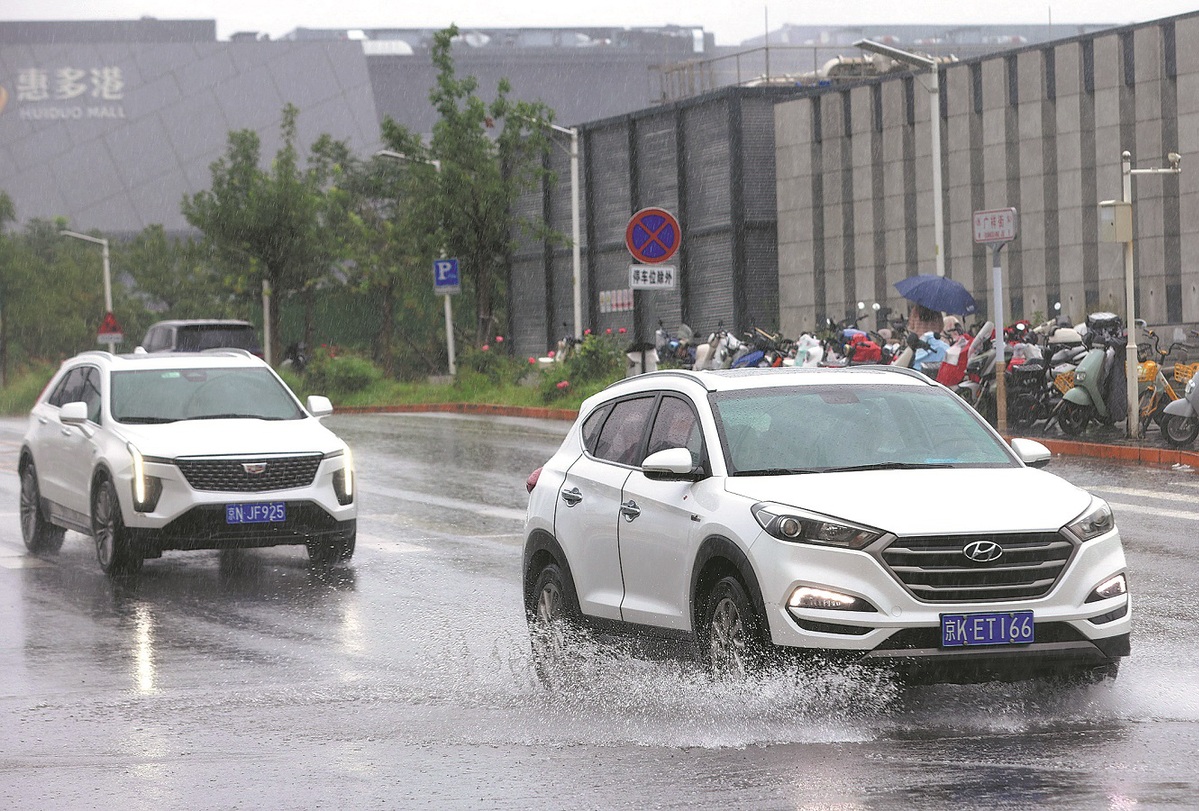A new wave of rain raises disaster risk


Northern China is facing a new wave of heavy rainfall, which increases the risk of secondary disasters due to previous downpours that have exceeded the seasonal average, according to Weather China, a website affiliated with the China Meteorological Administration.
The heavy rain that began on Monday started to affect the Beijing-Tianjin-Hebei region and Liaoning province on Wednesday. The rainfall is expected to subside by Thursday, with notable showers mainly in eastern Liaoning and southeastern Jilin province, Weather China said.
It said the rainstorm currently affecting northern China, which is expected to clear by Friday, comes with abundant moisture and significant totals, adding that although the storm is not as intense as midsummer storms, the rain will be prolonged with an "autumn rain" feel.
However, areas closer to the subtropical high, such as central and southern Shaanxi, southern Shanxi, and southern Hebei, should be cautious of strong storms, which may bring short-term heavy rain and strong gusts, it said.
With substantial rainfall in already saturated areas, the risk of secondary disasters increases. Since last week, rainfall in many areas of North and Northeast China has more than doubled the seasonal average, it added.
This unusual weather pattern is driven by a strong subtropical high positioned farther north, channeling warm, moist winds into the region, according to Weather China.
The Ministry of Natural Resources and the China Meteorological Administration jointly issued a geological disaster weather risk warning. From 8 pm on Tuesday to 8 pm on Wednesday, a yellow alert, the third highest of the four-tier warning system, was issued for most parts of northern China. Southwest Beijing saw an orange alert, the second-highest warning.
During the same period, the Ministry of Water Resources and the administration issued an orange alert for flash flood disasters, the second highest of the four-tier warning system, in parts of Beijing and the Inner Mongolia autonomous region, as well as parts of Hebei, Shanxi and Gansu provinces.
Xin Xin, chief weather analyst at Weather China, said that although the heat hasn't ended in northern China, the region can expect more dry days after Thursday. Even if daytime temperatures are high, nights will be cooler, making it comfortable enough to sleep without air conditioning.
Authorities in South China should keep an eye on potential typhoon activity, the Weather China said.
Typhoon Kajiki has moved on, but a new tropical disturbance surfaced on Wednesday. The disturbance could develop into a tropical depression or typhoon and is expected to move northwest toward the South China coast.
- Bocholt group visits Wuxi to honor friendship
- Domestic tourism spots receive nearly 5 billion visits in first three quarters
- Vibrant autumn colors attract tourists to Changchun park
- Shanghai's first exhibition for elderly learning highlights China's educational innovation
- New IP protection center to foster innovation in Greater Bay Area
- Respect the power and beauty of Qomolangma





































